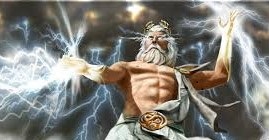
Electricity in Mythology
Electricity, in its natural form of lightning and thunder, has been a source of wonderment and awe for millennia. Long before the first electrical circuit was conceived or the first light bulb illuminated our nights, the brilliant flashes of lightning and the resounding booms of thunder were often seen as manifestations of the gods’ power or as omens from the heavens. At Starnes Electric LLC, our interest in electricity isn’t limited to the latest technological advancements; we’re equally fascinated by its ancient and mythological interpretations. Let’s embark on a journey through time, unraveling the electrifying tales that echo through the annals of mythology and folklore.
Zeus and Thor: The Thunder Gods
Perhaps two of the most recognized deities associated with thunder and lightning are Zeus from Greek mythology and Thor from Norse legend. Zeus, the king of the gods, wielded his thunderbolts not only as weapons but also as tools for meting out justice. His bolts were symbols of authority and power. When lightning streaked across the Grecian sky, it was believed to be Zeus displaying his strength or expressing his wrath.
Similarly, in the chilly realms of Norse legend, Thor, the red-bearded god, carried Mjölnir, a hammer capable of producing thunder and lightning. For the Vikings, the roaring sound of thunder was Thor battling giants or traversing the skies in his chariot, ensuring the safety of both gods and mortals.
The Celestial Dragon: An Eastern Perspective
Venturing East, the imagery changes, but the reverence remains. In Chinese mythology, lightning was often linked to dragons, celestial creatures that moved through the skies, controlling weather and water. These dragons weren’t menacing or evil; instead, they were symbols of potency and prosperity. When lightning flashed, it was the gleam of a dragon’s scales or its eyes. Thunder was the rumble of its movement or its mighty roar.
Native American Interpretations: Spirits in the Sky
Closer to home, Native American tribes had their own rich tapestry of beliefs surrounding thunder and lightning. For the Navajo, thunder represented the voice of the Thunderbird, a powerful spirit creature, while lightning was interpreted as the Thunderbird’s gleaming eyes or as snakes shot from its beak. The Plains tribes saw thunder as the beating of the Thunder Being’s enormous drum.
Modern Takeaways: A Balance of Respect and Understanding
As technological pioneers at Starnes Electric LLC, understanding and manipulating electricity is our craft. But as we wire homes, power industries, and light up cities, we always carry a deep respect for the elemental force we’re dealing with. This respect isn’t just rooted in the knowledge of electricity’s potential dangers but is also an acknowledgment of its profound cultural and mythological significance.
Electricity, in the form of lightning and thunder, has been with us since the dawn of humanity. These ancient tales remind us that our ancestors, though they did not have the scientific understanding we possess today, recognized the importance and power of these natural phenomena. They crafted stories and legends, not only to explain the inexplicable but also to give meaning and context to their experiences.
Today, we have a clearer understanding of the science behind thunderstorms and electricity. Still, as we harness this power for our needs, it’s essential to remember and honor the rich tapestry of tales that our forebears wove about this magnificent force. The myths and legends of electricity serve as a bridge, connecting our modern world with the ancient, reminding us of the awe and reverence our ancestors felt when they gazed upon the electric dance of lightning across the night sky.
Deciphering the Myths: Lightning and Thunder Unveiled
The heavens crack, and a bolt streaks across the sky, followed by the thunderous applause of the clouds. Such natural phenomena have intrigued humanity for centuries. But before the era of science and reason, how did our ancestors interpret these magnificent displays? Here at Starnes Electric LLC, while we work with the practical side of electricity, we’re equally captivated by its mythological and ancient stories. Let’s delve into the enchanting myths surrounding lightning and thunder.
What Is The Myth Story About Lightning And Thunder?
- Greek mythology tells of Zeus, the king of gods, who harnessed the power of lightning and thunder. He cast thunderbolts upon Earth, either as a sign of his wrath or to dispense divine justice.
- In Norse legend, Thor, the god of thunder, wields the mighty hammer Mjölnir. Each swing produced lightning, and its impact resounded as thunder, seen as Thor battling against giants or venturing through the skies.
What Was The Belief In Ancient People About Thunder And Lightning?
- Ancient Greeks: Believed that lightning was a tool of the gods, particularly Zeus, to communicate their pleasure or displeasure with mortals.
- Vikings: Perceived thunder as the sound of Thor’s chariot, and lightning as the manifestation of his powerful hammer.
- Chinese Traditions: Associated lightning with celestial dragons, seeing the flash as the glint of a dragon’s scale or eye.
- Native American Tribes: For tribes like the Navajo, thunder represented the voice of the Thunderbird, while lightning was seen as the glare of this powerful spirit’s eyes.
What Does Lightning Symbolize In Mythology?
- Divine Wrath: In many cultures, lightning was seen as a direct expression of a god’s anger or displeasure.
- Potency and Power: The sheer force and unpredictability of lightning made it a symbol of raw power and strength.
- Messenger of Gods: For some, lightning was a divine message from the heavens, a sign or an omen.
- Purity and Cleansing: The blinding brightness of lightning was also occasionally linked to themes of purity and the cleansing of evil.
What Is The Origin Of Lightning And Thunder?
- Scientific Explanation: In simple terms, lightning results from the discharge of electricity caused by the separation of positive and negative charges within a cloud or between a cloud and the ground. The rapid expansion and contraction of air around the lightning bolt produce the sound we recognize as thunder.
- Mythological Explanation: Depending on the culture, lightning and thunder originated from the actions or emotions of powerful deities, celestial creatures, or mighty spirits. Whether it was Zeus’s thunderbolts or the celestial dragons soaring, these stories aimed to explain the mysterious and often frightening phenomena in the skies.
We Got You Covered
Whether you’re turning on a switch or watching a storm roll in, take a moment to remember the ancient stories of lightning and thunder. They serve as a testament to humanity’s timeless fascination with the powerful forces of nature.
In our modern age, with advancements in technology and the understanding of natural phenomena, the mysteries of lightning and thunder have been largely demystified. Yet, the ancient tales that arose from attempts to understand these phenomena continue to enthrall and captivate our imaginations. At Starnes Electric LLC, while we embrace the science of electricity, we also respect and cherish the rich cultural tapestry of stories that have defined human experiences and interpretations of the world around us for millennia.




